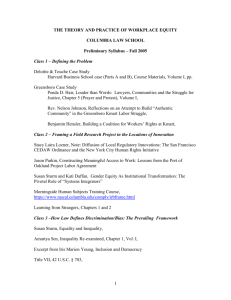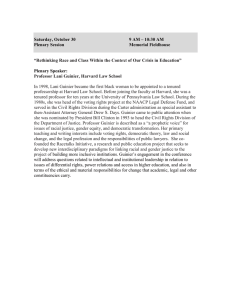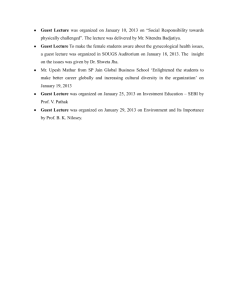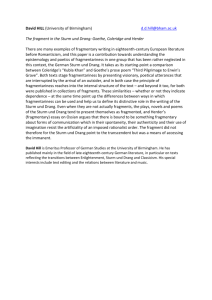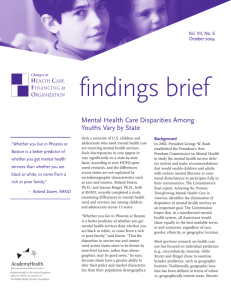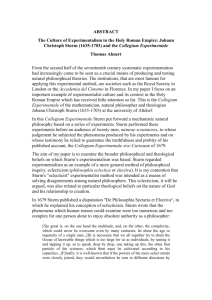Syllabus - Diversity and Innovation
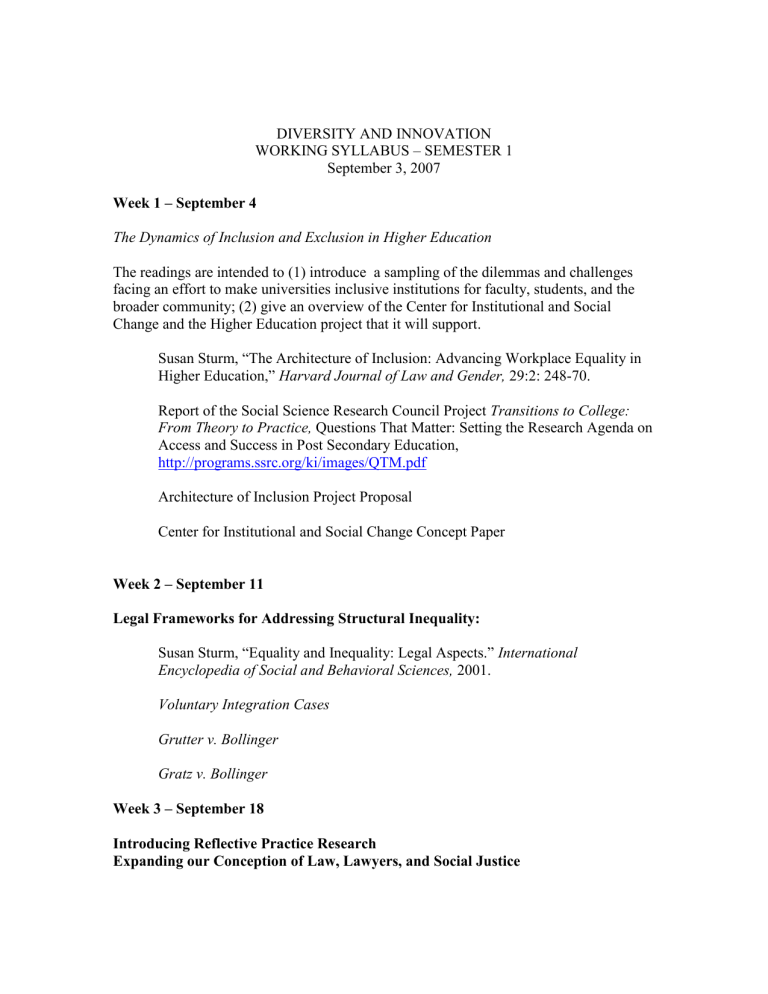
DIVERSITY AND INNOVATION
WORKING SYLLABUS – SEMESTER 1
September 3, 2007
Week 1 – September 4
The Dynamics of Inclusion and Exclusion in Higher Education
The readings are intended to (1) introduce a sampling of the dilemmas and challenges facing an effort to make universities inclusive institutions for faculty, students, and the broader community; (2) give an overview of the Center for Institutional and Social
Change and the Higher Education project that it will support.
Susan Sturm, “The Architecture of Inclusion: Advancing Workplace Equality in
Higher Education,”
Harvard Journal of Law and Gender, 29:2: 248-70.
Report of the Social Science Research Council Project Transitions to College:
From Theory to Practice, Questions That Matter: Setting the Research Agenda on
Access and Success in Post Secondary Education, http://programs.ssrc.org/ki/images/QTM.pdf
Architecture of Inclusion Project Proposal
Center for Institutional and Social Change Concept Paper
Week 2 – September 11
Legal Frameworks for Addressing Structural Inequality:
Susan Sturm, “Equality and Inequality: Legal Aspects.” International
Encyclopedia of Social and Behavioral Sciences, 2001.
Voluntary Integration Cases
Grutter v. Bollinger
Gratz v. Bollinger
Week 3 – September 18
Introducing Reflective Practice Research
Expanding our Conception of Law, Lawyers, and Social Justice
Guest participant – Howard Gadlin, Ombudsman, National Institutes of Health
Susan Sturm and Howard Gadlin, Conflict Resolution and Systemic Change, pp 1-6, 15-
23, 28-36, 38-58
Theories of Action, in Chris Argyris and Donald Schon, Theory in Practice: Increasing
Professional Effectiveness, pp. 3-19
Peter Fraenkel, Collaborative Research, pp. 237-38, 240-254
Human Subjects training
Week 4 - September 25
Alternative Frameworks for Addressing Structural Inequality
Guest participant: Lani Guinier
The Center for Social Inclusion, Thinking Change: Race, Framing and the Public
Conversation on Diversity. http://www.diversityadvancementproject.org/media/ThinkingChange.pdf
Susan Sturm, The Architecture of Inclusion: Interdisciplinary Insights on
Pursuing Institutional Citizenship
Amartya Sen, “Introduction.”
Inequality Reexamined.
Harvard UP, 2004. pp. 1-
11.
David Wilkins, From “Separate is Inherently Unequal” to “Diversity is Good for
Business: The Rise of Market-Based Diversity Arguments and the Fate of the
Black Corporate Bar
Lani Guinier – Meritocracy Inc. (to be distributed)
Week 5 - October 2
Research framing paragraph and Political Autobiographies
Students write, exchange, and discuss political autobiographies and overview of field research goals and ideas
Political Autobiography Assignment in Course Procedures Memo
Research Framing Assignment to be posted on Quickplace.
Individual meetings scheduled to discuss field research projects
Class will be held as a pot luck dinner
Week 6 – October 9
Micro-level Dynamics of Inclusion and Exclusion and their Remediation:
Cumulative disadvantage, stereotype threat, rejection sensitivity and disengagement, interactive biases, and interventions that address these dynamics
Invited guest participants: Valerie Purdie-Vaughn, Yale Psychology Department and/or Bonita London, Stonybrook
Claude Steele, "Thin Ice." The Atlantic Monthly. August 1999: 44-54.
Virginia Valian, "Gender Schemas at Work." Why So Slow?
MIT Press, 1999. pp. 1-22.
Brooks and Purdie Vaughn
Carol Dweck
Implicit Attribution Tests, https://implicit.harvard.edu/implicit/demo/measureyourattitudes.html http://www.understandingprejudice.org/iat/
Week 7 – October 16
Institutional and Cultural Dynamics and their Remediation:
Cultural bias, networks and relationships, institutional arrangements and governance structures that affect structural under-participation and innovative strategies of remediation
Guest: Jean Howard, founding Vice-Provost for Diversity Initiatives at Columbia
Edgar Schein, “Defining Organizational Culture.” Organizational Culture and
Leadership. Jossey-Bass, 1996. pp. 3-14.
Sturm and Guinier: The Law School Matrix: Reforming Legal Education in a
Culture of Competition and Conformity
Freudenberger, Howard, Jauregui and Sturm, Linking Mobilization to Power: The
Faculty-Led Diversity Initiative at Columbia
Robert Ibarra, Beyond Affirmative Action, Reframing the Cultural Context of the
Academy, pp. 229-59
Mark Bendick
Diversity End of Year Report
Week 8 – October 23
Linkages, Partnerships and Networks
Communities of practice, networks, opportunity and social capital networks and new forms of public intervention
Invited guest: Peter Bearman
Nan Lin Social Capital: A Theory of Social Structure and Action,
Race and the Invisible Hand: How White Networks Exlcude Black Men from
Blue Collar Jobs
Anthony Paik, Ann Southworth, and John P. Heinz. “Lawyers of the Right:
Networks and Organization.” http://ssrn.com/abstract=903326
Peter Bearman on Sexual activity networks
Bridges, Brokers, and Boosters and
Weak Linkages and Hot Networks
Professional networks
Week 9 – October 30
Macro-level Structure, Policy and Institutional Design
Roland Fryer
When Affirmative Action was White
Robert Lieberman, Shifting the Color Line
Stephen Goldsmith and William D. Eggers, Governing By Network.
Brookings Institution
Press, 2006. pp. 26-52; 121-129.
Olati Johnson, Disparity Rules
Week 10 – November 6
Methodologies of Interviewing
Invited participant: Sudhir Venkatesh
Conrad Johnson and Mary Zulack, Introduction to Interviewing
Robert Weiss, Learning from Strangers, Chapters 3 (to be added) and 4
Lofland and Lofland, Analyzing Social Settings
McKay, Davis and Fanning, Messages: The Communication Process
Week 11 – November 13
Bridge projects and networks– Geraldine Downey and Vanessa Anderson
Week 12 – November 20
The Role of Lawyers – in house counsel and advocates – Anurima Bhargava
Week 13 – December 4
The Role of Compliance and Information in Institutional Change
